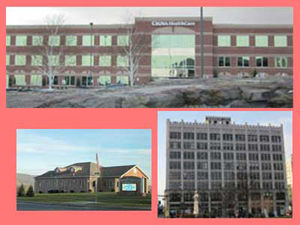California Dental Providers

USA Dental Edge breaks down oral care providers by county for the convenience of the customer/patient. Use the search tools here to find care near you.
California Counties
CA County List →About California
Residents of California find themselves in the same dilemna as people in every other state. The never-ending search for quality, affordable dental insurance for themselves or their families. Whether you live in the northern corner of the state near Crescent City, or the southern corner near San Diego, finding a value plan for your dentistry never seems to get any easier.
Along with fuel prices, food, utilities, taxes, and everything else, the costs associated with good dental care seem to keep rising. With the rise in prices comes the rise in rates for dental plans and insurance premiums.
The Golden state is currently home to roughly 37 million people, each of whom require dental care at some point. If the market is there, the insurance companies will be too. Whether you live in the larger California cities: Berkley, Brentwood, Fresno, Los Angeles, San Diego, Santa Ana, Long Beach, San Fransisco, Anaheim, Hollywood, and Oakland or the smaller towns in between, finding dental care in CA is easy if you know where to look.
Sometimes the state's latest statistics can help guide you as well. Some of the relevant dental statistics for California can be found here if you are interested in more in-depth numbers to aid your research.
- Anaheim
- Montery
- Ridgecrest
- Sacremento
- Oakland
- Santa Ana
- San Diego
- Los Angeles
- San Jose
- Brentwood
- Barstow
- Redding
- San Fransisco
- Long Beach
- Fresno
California Dental Statistics
It's amazing what statistics can tell us about society. Some simple data collection from everyday citizens paints a detailed picture of the state of oral health in the USA. Here are some interesting dental stats according to the Centers for Disease Control and Prevention:
- Nearly 78 percent of Americans have had at least one cavity before they reach the age of 18.
- 80 percent of the population residing in the USA has some form of gum (periodontal) disease.
- Americans make about 500 million dentist visits annually for preventive care and oral health issues
- American citizens, including residents of California, spend an estimated 98 billion dollars on dental services annually
- Overexposure to fluoride is higher in adolescents than in adults, those most affected are aged 12-15
- Most adults show signs of periodontal disease, with severe periodontal disease affecting approximately 14 percent of adults
- Men are more likely than women to have more severe dental diseases including oral cancer
- Three out of every four patients don't change their toothbrush as often as is recommended
- As many as 16 percent of children between 6 and 19 and 23 percent of adults age 20 and up have untreated cavities
Some basic statistics about California can put the current state of dental health care into perspective. The U.S. Census Bureau takes a census of the population every 10 years. They conduct censuses of business activity every five years. They also conduct various other surveys on an annual basis. The following data is derived from the 2020 Census as well as other surveys of business activity in California.
(Stand by, detailed statistics are still being configured...)
Latest data derived from Census.org | Centers for Disease Control and Prevention
UDE is user supported. When you buy through our site, we may earn a small affiliate commission, our full disclosure is here.California Middle Class and Dental Care
California's middle class had been facing challenges, and there were indications that it was shrinking. But how will the shrinking middle class affect the state's overall quality of dental care? Several factors contributed to the shrinking middle class, including:
- Housing Costs: California has some of the highest housing costs in the United States. The rising cost of homeownership and rent made it difficult for many middle-class families to afford proepr dental care along with housing in desirable locations, particularly in major cities like San Francisco, Los Angeles, and San Diego.
- Income Inequality: While California is home to some of the country's wealthiest individuals and corporations, there are also significant income disparities. The wealth generated in certain industries and regions was not evenly distributed, leading to a widening gap between the rich and the middle class hterfore lessening the quantity and quality of dental care for most families.
- Cost of Living: In addition to housing, other living costs in California, such as dental healthcare, education, and transportation, have also been relatively high. These expenses can put a strain on the budgets of middle-class families.
- Economic Shifts: The state's economy has experienced significant shifts over the years, with certain industries growing rapidly while others faced challenges or declined. Some middle-class jobs were affected by automation, offshoring, or changes in market demand.
- COVID-19 Pandemic: The COVID-19 pandemic further exacerbated economic disparities and had a significant impact on employment and businesses in California. Many middle-class individuals experienced job losses or reduced hours during the pandemic. A reduction in dental benefits goes hand-in-hand with job losses.
The California Homeless Dental Dilemna
Homeless individuals in California often face significant challenges when it comes to accessing dental care. Dental health is a crucial aspect of overall well-being, but for those experiencing homelessness, finding and affording dental services can be difficult. Here are some options and resources that California homeless people can explore when searching for dental care:
- Local Health Clinics: Many California cities and towns have community health clinics that offer dental services on a sliding scale, meaning the cost is adjusted based on the individual's ability to pay. Some clinics may also provide free dental care for the homeless or those with limited financial resources.
- Nonprofit Organizations: Some nonprofit organizations and charitable foundations focus on providing dental care to vulnerable populations, including the homeless. They may operate mobile dental clinics or partner with existing dental facilities to offer free or low-cost services.
- Dental Schools: Dental schools located throughout California and dental hygiene programs often offer discounted services to the public. Homeless individuals can check if there is a dental school in their area that provides affordable dental care under the supervision of qualified dental professionals.
- Free Dental Days: Some dental offices or dental organizations hold special events where they offer free dental services to those in need. These events are usually advertised in local communities or through social service agencies.
- Government Assistance Programs: Depending on the location in the state of California, there may be government-sponsored programs that provide dental assistance to low-income or homeless individuals. These programs may be available through state or local health departments.
- Homeless Shelters and Outreach Programs: Homeless shelters and outreach programs may sometimes collaborate with local dentists or organizations to offer dental care to their California residents or clients.
- Dental Vouchers or Referrals: Social service agencies or organizations that assist the homeless may have dental vouchers or referral networks to help individuals access dental services at reduced costs.
The availability of these resources for the California homeless community may vary depending on the location. Homeless individuals can reach out to local social service agencies, shelters, or community health centers to inquire about dental care options in their area. Additionally, dental associations or government websites may provide information about programs that cater to vulnerable populations.
How About California's Poor Children?
Finding dental care for California's children in poverty can be challenging, but there are resources available to help ensure they receive the necessary oral health services. Here are some options and resources that families with children in poverty can explore:
- Medicaid and CHIP: In California, Medicaid and the Children's Health Insurance Program (CHIP) provide health coverage for low-income children. Both programs typically cover dental services, including check-ups, cleanings, and treatments. Eligibility and covered services may vary by state, so families should check their state's Medicaid or CHIP program for details.
- Community Health Centers: Federally Qualified Health Centers (FQHCs) and other community health centers located throughout California offer affordable healthcare services, including dental care, on a sliding scale based on income. These centers are present in many communities and provide comprehensive dental services for children and adults.
- School-Based Dental Programs: Some schools partner with dental clinics or mobile dental units to provide dental care on-site. These programs may offer dental exams, cleanings, sealants, and basic treatments for students in California at little or no cost.
- Nonprofit Organizations: Several nonprofit organizations focus on providing dental care to underserved populations, including children in poverty. These organizations may operate free or low-cost dental clinics or partner with dentists licensed in California who offer pro bono services.
- Children's Health Days: Some communities host special health events that include free dental check-ups and treatments for children. These events are usually advertised locally, so families can check community centers, schools, or social service agencies for information.
- California Statewide and Local Dental Programs: Check for dental assistance programs specifically designed for children in need. These programs may offer free or reduced-cost dental services for eligible children.
- Dental Vouchers or Referrals: Social service agencies, schools, or nonprofit organizations may have dental vouchers or referral networks to help California's families access dental care for their children.
Families can inquire about these resources at local health departments, social service agencies, schools, or community centers. Dental associations and advocacy groups may also provide information on available dental programs for children in poverty regardless of where they live in California. Early dental care is crucial for children's oral health, and finding appropriate resources can make a significant difference in their overall well-being.
About UDE
UDE is a free service designed to help place perspective patients with various oral care providers in close proximity. USA Dental Edge organizes oral care providers primarily by county (or parish when applicable).




